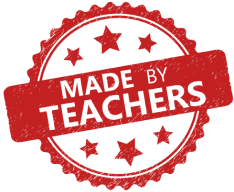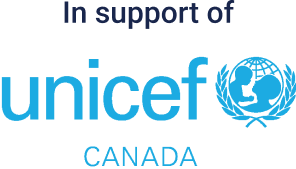Ontario Grade 6

CLICK HERE FOR CURRICULUM CONNECTIONS, LESSONS AND SUPPORT RESOURCES.
Made by a Grade 6 teacher in Ontario.
Kids Boost Immunity (KBI) provides educational content (lessons and support materials) developed by teachers and where needed, health experts, that is directly linked to curriculum and is available completely for free. Each lesson is paired with an online quiz that students can take on a laptop, tablet, or phone. Every time a student scores 80% or higher on a quiz, we donate life-saving vaccines to UNICEF Canada. To learn more about KBI, click here.
Click on the overarching curriculum themes below to see the curriculum outcomes that match KBI educational content. The full Grade 6 Ontario Curriculum Connections document is here.
- Critical Thinking
-
Curricular outcomes:
Math
- E2.6- determine the surface areas of prisms and pyramids by calculating the areas of their two-dimensional faces and adding them together
- D1.6- analyse different sets of data presented in various ways, including in histograms and broken-line graphs and in misleading graphs, by asking and answering questions about the data, challenging preconceived notions, and drawing conclusions, then make convincing arguments and informed decisions
Science: STEM Skills & Connections
- A1.1- use a scientific research process and associated skills to conduct investigations
- A1.2- use a scientific experimentation process and associated skills to conduct investigations
- A1.5- communicate their findings, using science and technology vocabulary and formats that are appropriate for specific audiences and purposes
Language: Literacy Connections & Applications
- A2.2- demonstrate an understanding of how to navigate online environments safely, manage their privacy and personal data, and interact in a way that supports their well-being and that of others, including seeking appropriate permission
- A2.3- gather, evaluate, and use information, considering validity, credibility, accuracy, and perspectives, to construct knowledge, create texts, and demonstrate learning
- A2.4- demonstrate an understanding of the forms, conventions, and techniques of digital and media texts, consider the impact on the audience, and apply this understanding when analyzing and creating texts
- A2.5- demonstrate an understanding of the interrelationships between the form, message, and context of texts, the intended audience, and the purpose for production
Social Studies: Heritage & Identity
- A2.2- gather and organize information from a variety of primary and secondary sources
Applicable KBI lessons:
1. Critical Thinking & Evaluating Information
- Literacy builder worksheet/answer guide
- Lesson worksheet/answers
- Video worksheet/answers
- Inquiry activities/answer guides
- Numeracy activity/answers
2. Navigating the World of Online (Mis)Information
- Literacy builder worksheet/answer guide
- Inquiry activities/answer guides
- Citizenship & Community
-
Curricular outcomes:
Language: Literacy Connections & Applications
- A3.3- explain themes explored in First Nations, Métis, and Inuit cultures to demonstrate an understanding of the varied identities, perspectives, relationships, legacies, truths, and ways of knowing, being, and doing
- A2.7 communicate and collaborate with various communities in a safe, respectful, responsible, and inclusive manner when using online platforms and environments, including digital and media tools, and demonstrate cultural awareness with members of the community
Language: Foundations of Language
- B2.2- demonstrate an understanding of a variety of words, acquire and use explicitly taught vocabulary in various contexts, including other subject areas, and use generalized morphological knowledge to analyze and understand new words in context
Social Studies: Heritage & Identity
- A1.2- analyse some of the contributions that various First Nations, Métis, and Inuit communities and individuals have made to Canada
- A1.4- explain how various groups and communities, including First Nations, Métis, and Inuit communities, have contributed to the goal of inclusiveness in Canada
- A2.1- formulate questions to guide investigations into different perspectives on the historical and/or contemporary experiences of a few distinct communities, including First Nations, Métis, and/or Inuit communities, in Canada
- A2.2- gather and organize information from a variety of primary and secondary sources that present different perspectives on the historical and/or contemporary experience of a few communities, including First Nations, Métis, and/or Inuit communities, in Canada
- A2.5- evaluate evidence and draw conclusions about perspectives on the historical and/or contemporary experience of a few distinct communities, including First Nations, Métis, and/or Inuit communities, in Canada
- A2.6- communicate the results of their inquiries, using appropriate vocabulary
- A3.5- describe significant events or developments in the history of two or more First Nations, Métis, and/or Inuit communities in Canada and how these events affected the communities’ development and/or identities
Health Education: Social & Emotional Learning Skills (Healthy Living)
- A1.6- apply skills that help them think critically and creatively as they participate in learning experiences in health and physical education, in order to support making connections, analysing, evaluating, problem solving, and decision making
Health Education: Healthy Living
- D1.1- demonstrate ways of being inclusive, respectful, and accepting, and describe how this benefits everyone, including themselves
Science: STEM Skills & Connections
- A3.3- analyse contributions to science and technology from various communities
Applicable KBI lessons:
1. Indigenous Experiences of Colonization
- Literacy builder worksheet/answer guide
- Lesson worksheet/answers
- Inquiry activities/answer guides
- Interconnections
-
Curricular outcomes:
Science: STEM Skills & Connections
- A3.2- investigate how science and technology can be used with other subject areas to address real-world problems
Science: Life Systems
- B1.2- analyse a local issue related to biodiversity while considering different perspectives; plan a course of action in response to the issue; and act on their plan
- B2.1- describe the distinguishing characteristics of different groups of organisms, and use these characteristics to further classify these organisms using a classification system
- B2.2- demonstrate an understanding of biodiversity as the diversity of life on Earth, including the diversity of organisms within species, among species in a community, and among communities and the habitats that support them
- B2.5- describe interrelationships within species, between species, and between species and their natural environment, and explain how these interrelationships sustain biodiversity
- B2.7- explain how climate change contributes to a loss of biodiversity, and describe the impact of this loss
Math: Number
- B1.6- describe relationships and show equivalences among fractions and decimal numbers up to thousandths, using appropriate tools and drawings, in various contexts
Social Studies: Peoples & Environments
- B1.1- explain why Canada participates in specific international accords and organizations
- B1.2- analyse responses of Canadian governments, non-governmental organizations (NGOs), and individual citizens to an economic, environmental, political, and/or social issue of international significance
- B1.3- explain why some environmental issues are of international importance and require the participation of other regions of the world, along with that of Canada, if they are to be effectively addressed
- B2.3- analyse and construct different types of maps, both print and digital, as part of their investigations into global issues, their impact, and responses to them
- B2.5- evaluate evidence and draw conclusions about global issues of political, social, economic, and/or environmental importance, their impact on the global community, and responses to the issues
- B3.1- identify some of the major ways in which the Canadian government interacts with other nations of the world
- B3.2- describe Canada’s participation in different international accords, organizations, and/or programs
- B3.3- describe several groups or organizations through which Canada and Canadians are involved in global issues
- B3.4- describe the responses of the Canadian government and some NGOs to different disasters and emergencies around the world
- B3.6- identify some significant political, social, and economic interactions between Canada and other regions of the world, and describe some ways in which they affect these regions
Health Education: Healthy Living
- D2.6- make informed decisions that demonstrate respect for themselves and others
Applicable KBI lessons:
1. Diversity of Living Things
- Literacy builder worksheet/answer guide
- Lesson worksheet/answers
- Video worksheet/answers
- Numeracy activity/answers
2. Environment & Climate Change
- Literacy builder worksheet/answer guide
- Lesson worksheet/answers
- Video worksheet/answers
- Inquiry activities/answer guides
- Numeracy activity/answers
3. Canada's Interactions with the Global Community
- Literacy builder worksheet/answer guide
- Lesson worksheet/answers
- Video worksheet/answers
- Inquiry activities/answer guides
- Numeracy activity/answers.
4. Global Inequality
- Lesson worksheet/answers
- Inquiry activities/answer guides
Curriculum-Related Themes Throughout the Year
- Reflecting on hardships and courage during WWII (November)
-
Curricular outcomes:
Language:
- C2.1 – Identify and explain prior knowledge from various sources, including personal experiences and learning in other subject areas, that they can use to make connections and understand new texts.
- C2.3- make predictions using background knowledge and textual information, pose questions to check whether their predictions were correct, and, if not, adjust their understanding.
- C2.5- explain how the ideas expressed in texts connect to their knowledges and lived experiences, the ideas in others texts, and the world around them.
Social Studies:
- A1.2 – analyse some of the contributions that various First Nations, Metis, and Inuit communities and individuals have made to Canada
- A1.1 – explain how various features, including built, physical, and social features of communities can contribute to identities in and images of a territory and/or country, and assess the contribution of some of these features to images of and identities of Canada.
Applicable KBI lessons:
1. Remembrance Day / Veterans Day / Armistice Day
- Building Leadership Skills To Help Others (December)
-
Curricular outcomes:
Health:
- D1.5 – demonstrate an understanding of the interconnections between a person’s thoughts, emotions, and actions, and of the potential impact of positive and negative thinking on mental health
Language:
- C2.1 – Identify and explain prior knowledge from various sources, including personal experiences and learning in other subject areas, that they can use to make connections and understand new texts.
- C2.3- make predictions using background knowledge and textual information, pose questions to check whether their predictions were correct, and, if not, adjust their understanding.
- C2.5- explain how the ideas expressed in texts connect to their knowledges and lived experiences, the ideas in others texts, and the world around them.
Applicable KBI lessons:
1. Winter Break - A Time To Reflect on Making a Difference
- Literacy builder worksheet/answer guide
- Activity - Making A Difference
- Activity - Compare and Contrast special things at this time of year
- Activity - Recipe book
- Highlighting some key inspirational leaders during Black History Month as well as some experiences of refugees from different parts of the world (February)
-
Curricular outcomes:
Social Studies:
- A1.2 – analyse some of the contributions that various First Nations, Metis, and Inuit communities and individuals have made to Canada
- A1.1 – explain how various features, including built, physical, and social features of communities can contribute to identities in and images of a territory and/or country, and assess the contribution of some of these features to images of and identities of Canada.
- B1.2 – analyse responses of Canadian governments, non-governmental organizations (NGO), and individual citizens to an economic, environmental, political, and/or social issues of international significance
- B3.2- Describe Canada’s participation in different international accords, organizations, and/or programs
- B3.4-Describe the responses of the Canadian government and some NGOs to different disasters and emergencies around the world.
Science:
- A3.1- describe practical applications of science and technology concepts in various occupations, including skilled trades, and how these applications address real-world problems.
- A3.2- investigate how science and technology can be used with other subject areas to address real-world problems
- A3.3 – analyse contributions to science and technology from various communities.
Language:
- C2.1 – Identify and explain prior knowledge from various sources, including personal experiences and learning in other subject areas, that they can use to make connections and understand new texts.
- C2.3- make predictions using background knowledge and textual information, pose questions to check whether their predictions were correct, and, if not, adjust their understanding.
- C2.5- explain how the ideas expressed in texts connect to their knowledges and lived experiences, the ideas in others texts, and the world around them
Applicable KBI lessons:
1. Black History Month
2, Refugee Experiences
- Lesson worksheet/answers
- Inquiry activities
- Celebrating Inspiring Women in STEM (March)
-
Curricular outcomes:
Science:
- A3.1- describe practical applications of science and technology concepts in various occupations, including skilled trades, and how these applications address real-world problems.
- A3.2- investigate how science and technology can be used with other subject areas to address real-world problems
- A3.3 – analyse contributions to science and technology from various communities.
- B2.4- describe ways in which biodiversity within and among communities is essential for maintaining the resilience of these communities.
- B2.5 – describe interrelationships within species, between species and their natural environment, and explain how these interrelationships sustain biodiversity.
- E1.1 – analyse the impact that conditions in space have on humans engaged in space exploration, and explain how humans meet their social, emotional, and physiological needs in space
- E1.3- evaluate the social and environmental impacts of space exploration while taking various perspectives into consideration.
Social Studies:
- A1.1- explain how various features, including built, physical, and social features of communities, can contribute to identities in and images of a territory and/or country
- A1.2 – analyse some of the contributions that various First Nations, Metis, and Inuit communities have made to Canada.
Language:
- C2.1 – Identify and explain prior knowledge from various sources, including personal experiences and learning in other subject areas, that they can use to make connections and understand new texts.
- C2.3- make predictions using background knowledge and textual information, pose questions to check whether their predictions were correct, and, if not, adjust their understanding.
- C2.5- explain how the ideas expressed in texts connect to their knowledges and lived experiences, the ideas in others texts, and the world around them
Applicable KBI lessons:
1. International Women's Day - Celebrating Inspiring Women in STEM
- Literacy builder worksheets/answer guides
- Inquiry activities
- Understanding communicable diseases and how they are spread, and learning about immunization. Suggested during flu season, immunization awareness week, and school vaccinations (if applicable)
-
Curricular outcomes:
Language:
- C2.1 – Identify and explain prior knowledge from various sources, including personal experiences and learning in other subject areas, that they can use to make connections and understand new texts.
- C2.3- make predictions using background knowledge and textual information, pose questions to check whether their predictions were correct, and, if not, adjust their understanding.
- C2.5- explain how the ideas expressed in texts connect to their knowledges and lived experiences, the ideas in others texts, and the world around them.
Applicable KBI lessons:
1. Immunization Awareness Week
2. The Spread of Infectious Diseases
3. Scientific Curiosity and Vaccine Discoveries
- Literacy builder worksheets/answer guides
- Inquiry activities




